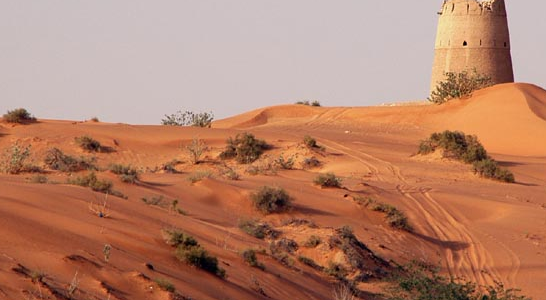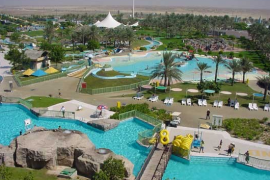What has Umm al Quwain got to offer that Dubai does not? This small emirate north of Sharjah lies along the same Arabian coast as Dubai but it is quieter. It’s the perfect choice for those wanting to rub shoulders with the local culture and lifestyle of the UAE while still enjoying all the comforts of home.
This relatively small emirate of around 290 square miles (750 km2) is the least populated of the seven emirates with approximately 72,000 inhabitants. The emirate is on a peninsula surrounding a bay and creek known as Khor Umm al Quwain which is large enough to include seven islands. Coastal mangroves give way to sand dunes, city and desert, with an inland agricultural oasis at Falaj Al Moalla.
The Old Town and business district are at the northernmost tip of the peninsula lining King Faisal Road.
History of Umm al Quwain
Umm al Quwain has a long history, with discoveries of arrowheads, flint tools and pottery indicating the presence of semi-nomadic tribes as far back as the Bronze Age over 3,000 years ago.
The timeless trades of fishing and date farming are still evident in this peaceful area, blending harmoniously with the modern city architecture. The development of Umm al Quwain began around 200 years ago when the Al Ali tribe settled permanently in the area and established an independent sheikhdom in 1775. In 1820 it became a British Protectorate as part of the General Maritime Treaty and was considered important enough to have a three gun salute.
A century later, boat building was an important part of Umm al Quwain’s industry producing twice as many boats as Dubai. Modern-day development arrived in 1971 when Umm al Quwain joined with other emirates to form the United Arab Emirates (UAE).
Things to Do in Umm al Quwain
Currently ruled by Sheikh Saud bin Rashid Al Mu’alla, the emirate attracts tourists with its seven forts, cultural attractions and long sandy beach. Transport around the city is by taxi rather than bus, but prices are reasonable.
Al-Sinnayah Island is home to one of the largest colonies of cormorants in the world. Arabian gazelle also thrive on this island, which is separated from the mainland of Umm al Quwain by extensive mud flats which are a feeding ground for migratory birds. This unspoilt area is just one of the surprises in store for visitors more familiar with the high-rise architecture and commercial centre of Dubai, just 40 miles to the south.
Tourist attractions in Umm al Quwain include traditional Arabian sports such as falconry, fishing and camel racing. Dune bashing, sailing, waterskiing and other watersports can be enjoyed on the beach.
The emirate’s seafaring history can be explored on a visit to a dhow boatyard where skilled craftsmen continue to make these wooden sailboats. The old forts and coral stone houses add to the charm of the Old Town and the Umm al Quwain Museum is well worth a visit.
More modern attractions include Dreamland, north of the city on the Ras Al Khaimah highway. This family-friendly waterpark is the largest aquapark in the world. The local Aquarium features fish, corals, stingrays and marinelife found in the area. Happyland is another popular attraction for families with bouncy castles, video games and activities for youngsters to run off their energy.
Dubai or Umm Al Quwain? Now you know the difference, the choice is yours!


